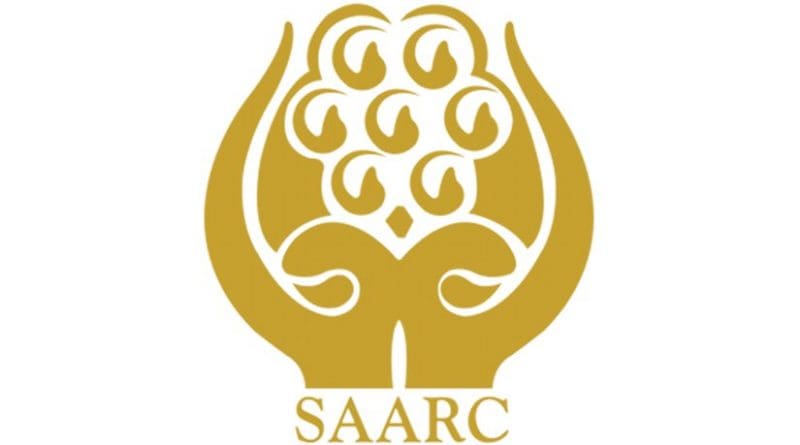Jump-Starting Economic Integration In South Asia: A Multi-pronged Approach – Analysis
By RSIS
Five countries are boycotting the SAARC summit in Pakistan. Instead, South Asian countries need to adopt a multi-pronged approach to reinvigorate economic integration in their region including a ‘SAARC minus x’ scheme along the ASEAN model.
By Pradumna B. Rana*
Inia and four other countries have pulled out of the 19th summit of the South Asia Association for Regional Cooperation (SAARC) to be held in Islamabad in November. India’s action was taken in the wake of the Uri attack on 18 September 2016 in the Indian-administered state of Jammu and Kashmir. Similar actions by Afghanistan, Bangladesh, Bhutan, and Sri Lanka have led commentators to opine that “SAARC is dead”.
According to the SAARC charter, a summit of the eight-member grouping cannot be held even if one member pulls out; this time five members have done so. The inability to hold summits is not, however, something new in the SAARC. Summits have either not been held or postponed in roughly half of the years that the grouping has been in existence. The main reason for this is the conflict between nuclear-powered India and Pakistan. But SAARC is resilient and eventually diplomacy will prevail and the summits will resume as in the past, if intermittently.
Bilateralism, Sub-regionalism, and Inter-regionalism ASEAN-style
Notwithstanding political obstacles, boycotting the summit will only weaken further a weak institution. Instead members should work together to strengthen the SAARC mechanisms to address regional concerns. One mechanism that needs to be strengthened is the decision-making process. As in ASEAN, decisions in the SAARC are made by a full consensus among its members. To reduce this inflexibility, ASEAN has the ‘ASEAN minus x’ scheme under which members that are not ready to commit to an initiative can opt out so that progress will not be held up. SAARC should adopt a similar SAARC minus x scheme.
The South Asian countries should also go for schemes outside the SAARC framework such as bilateralism and sub-regionalism. Prime Minister Modi had supported this approach at the 18th summit held in Kathmandu in 2014, where he remarked that regional integration in South Asia should go ahead “through SAARC or outside it, among all of us or some of us”.
Bilateralism was a key pillar of Prime Minister Modi’s “Neighbours First Policy”. His first day in office in May 2014 was dedicated exclusively to bilateral meetings with the leaders of the SAARC countries. His first state visit was to Bhutan and then to Nepal. Unfortunately the outcomes of this grand vision have been disappointing and limited to a number of connectivity projects with three countries, Afghanistan, Bangladesh, and Sri Lanka.
South Asian countries should also go for sub-regionalism as it is less sensitive. These include the ADB-led South Asia Sub-Regional Economic Cooperation (SASEC) whose members are India, Bangladesh, Bhutan, Maldives, Nepal, and Sri Lanka. The ADB has approved 40 infrastructure and IT projects totaling US$7.7 billion for this grouping.
The Bangladesh-India-Bhutan-Nepal (BIBN) is another sub-regional grouping that shows promise. In June 2015, the BIBN Motor Vehicle Agreement was signed. This Agreement enables vehicles to enter any of the four countries without the need for trans-shipment, thereby, reducing transport costs. Plans for energy cooperation are also under consideration.
Build Linkages with ASEAN
South Asian countries could also enhance their inter-regional linkages with ASEAN, their largest market. In a previous era the commercial and religious links between the two regions were strong and had led to a prosperous and integrated Asia.
More recently, economic relations between South Asia and Southeast have surged. But their full potential has yet to be realised. South Asian countries need to implement policies to link themselves to production networks in ASEAN and to develop production networks within their own countries. Such policies will lead to a win-win situation for all countries. They would also help to reinvigorate economic integration in South Asia.
The Bay of Bengal Initiative for Multi-Sectoral Technical and Economic Cooperation (BIMSTEC) is the appropriate institutional framework to promote inter-regional cooperation because it connects South Asian countries (except Pakistan and Afghanistan which are not members) with some East Asian countries (Myanmar and Thailand). In a survey of Asian opinion leaders that was conducted, four out of five leaders felt that BIMSTEC should play a more active role in promoting regional connectivity and integration in Asia.
India is slated to host the BIMSTEC summit in mid-October on the sidelines of the BRICS summit. Issues related to transport as well as electricity and broadband connectivity are to be discussed. Another inter-regional grouping is the Indian Ocean Rim Association (IORA). The recently held India-led Indian Ocean Conference 2016 is a step in the right direction.
Way Ahead
Before the partition of India and Pakistan in 1947, South Asia was one of the most integrated regions of the world. At that time more than one-half of Pakistan’s imports and nearly two-thirds of its exports were from India. It is estimated that the volume of intra-regional trade in South Asia then stood at about 20 per cent of its total trade. This has fallen to a dismal five per cent. Political conflicts and mistrust have succeeded in transforming one of the most integrated regions of the world into the least integrated one.
Boycotting the SAARC, however, is not the answer. South Asian countries should adopt a multi-pronged approach to jump-start economic integration in their region. This should comprise a SAARC minus x scheme, together with bilateralism, sub-regionalism, and inter-regionalism outside the SAARC framework.
*Pradumna B. Rana is Associate Professor and Coordinator of the International Political Economy Programme in the Centre for Multilateralism Studies (CMS) at the S. Rajaratnam School of International Studies (RSIS), Nanyang Technological University, Singapore.

